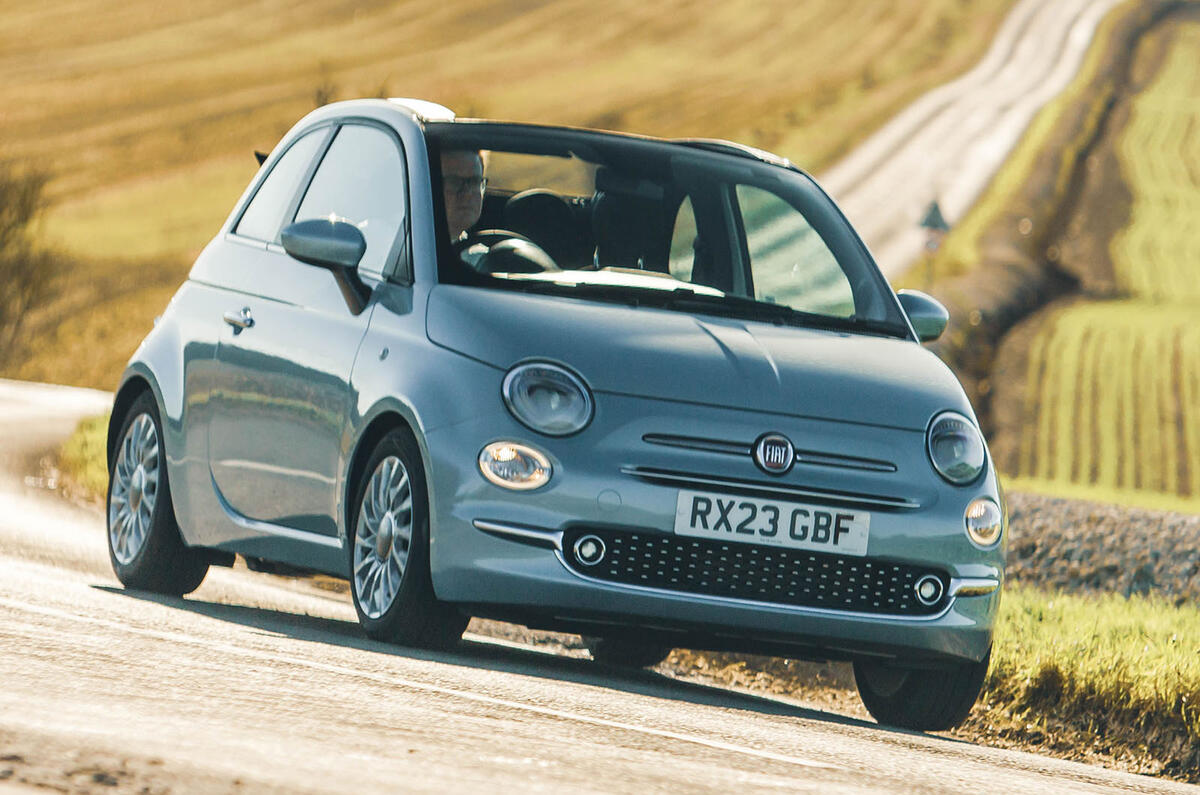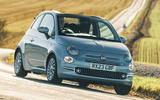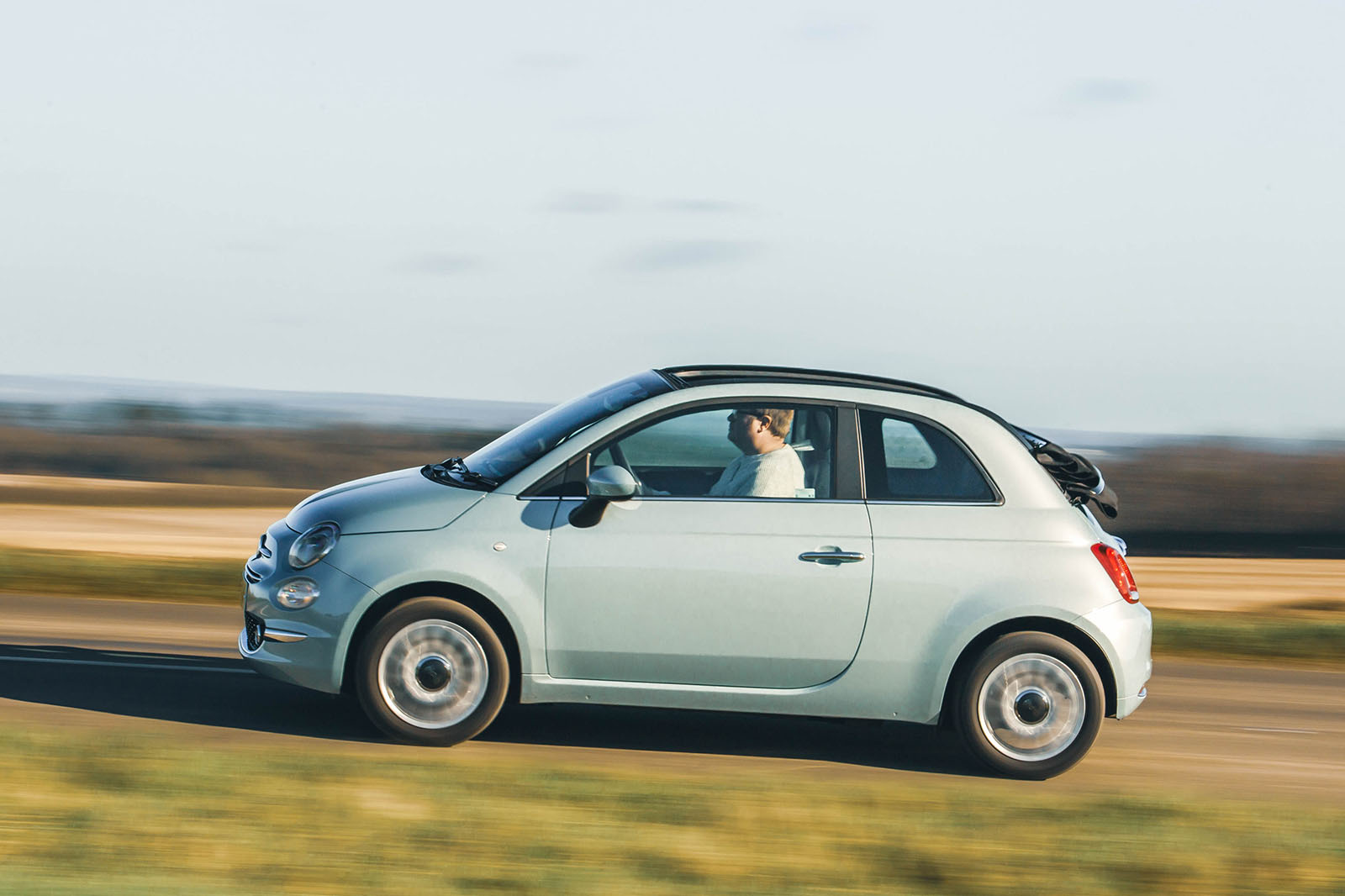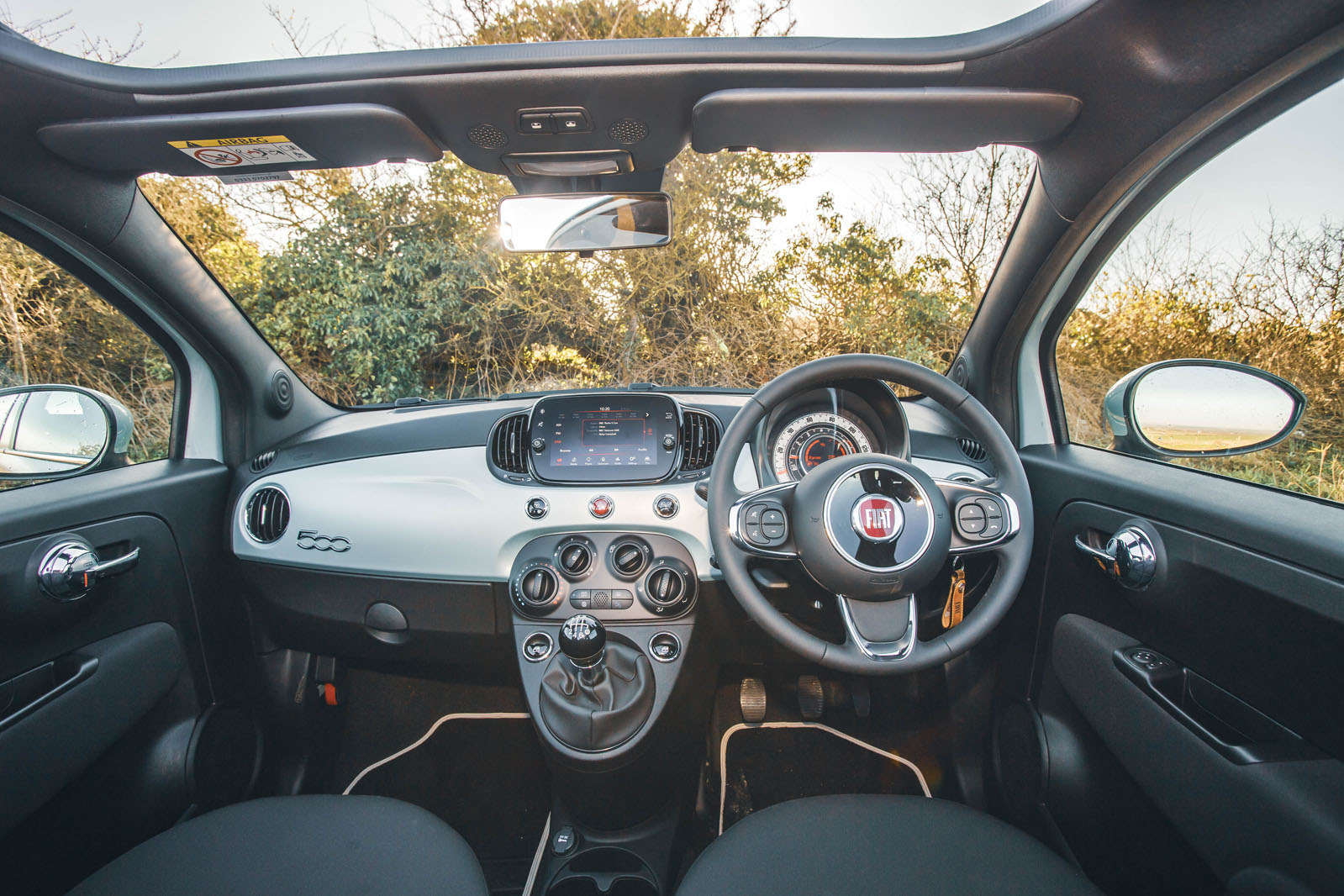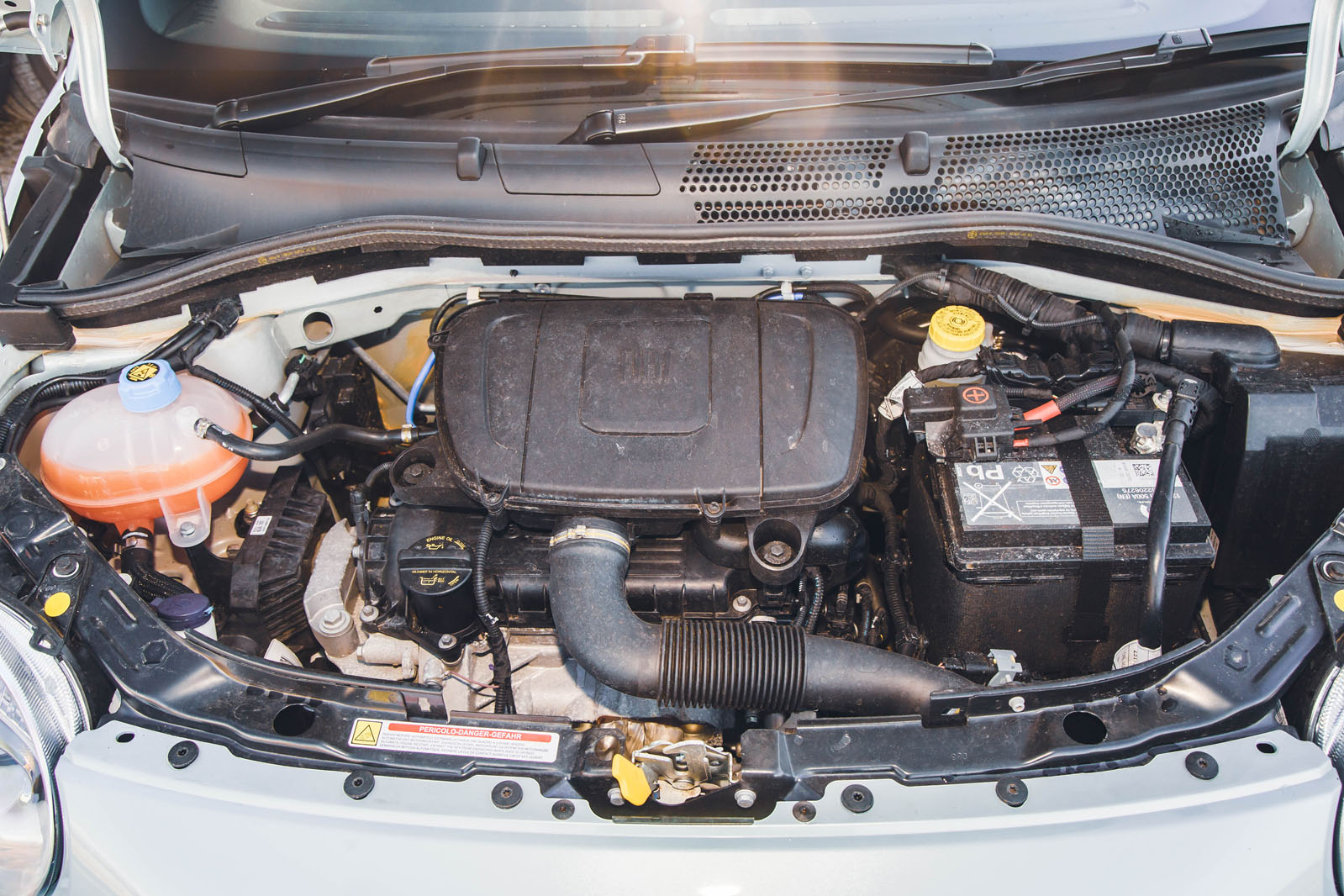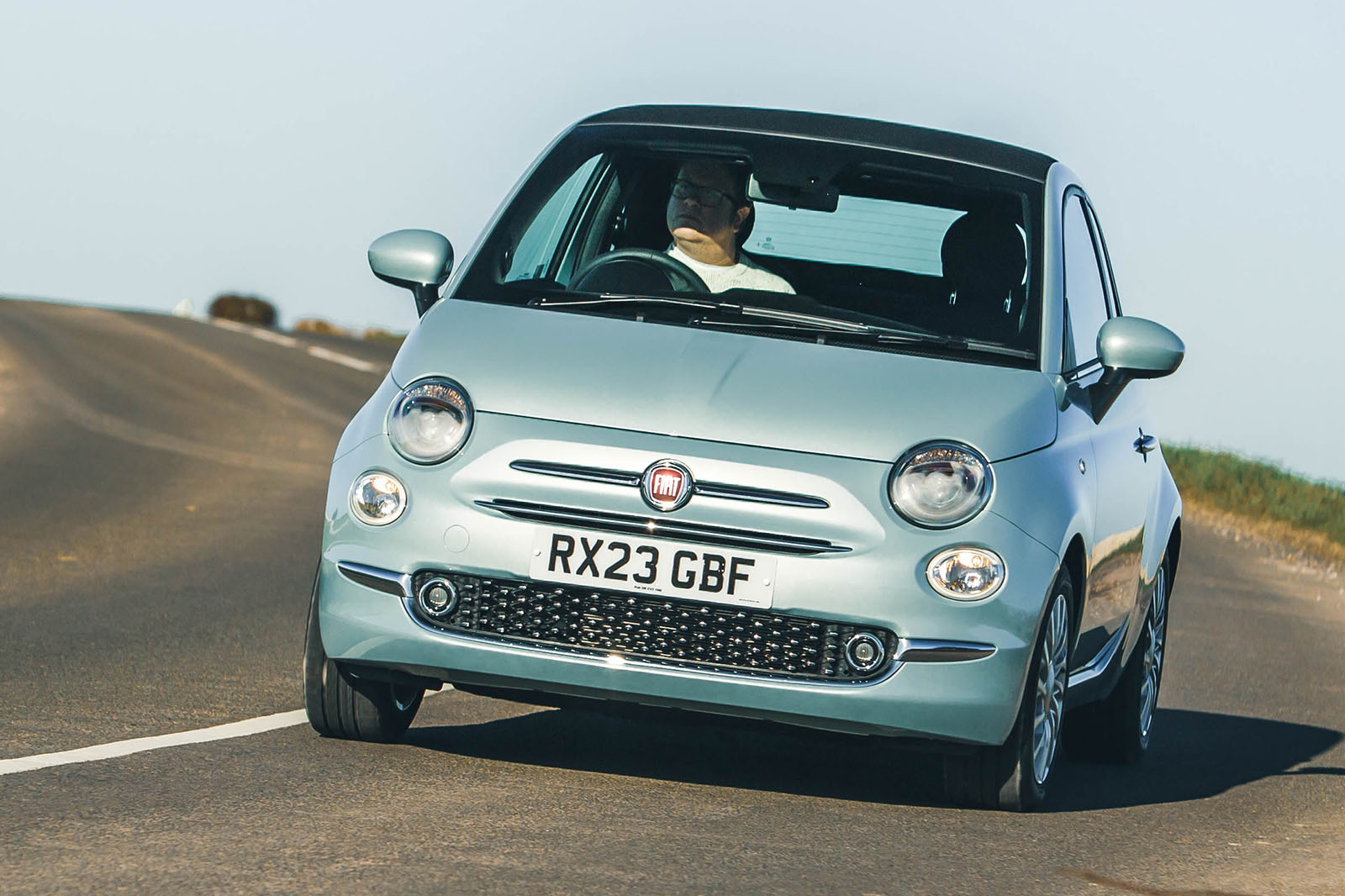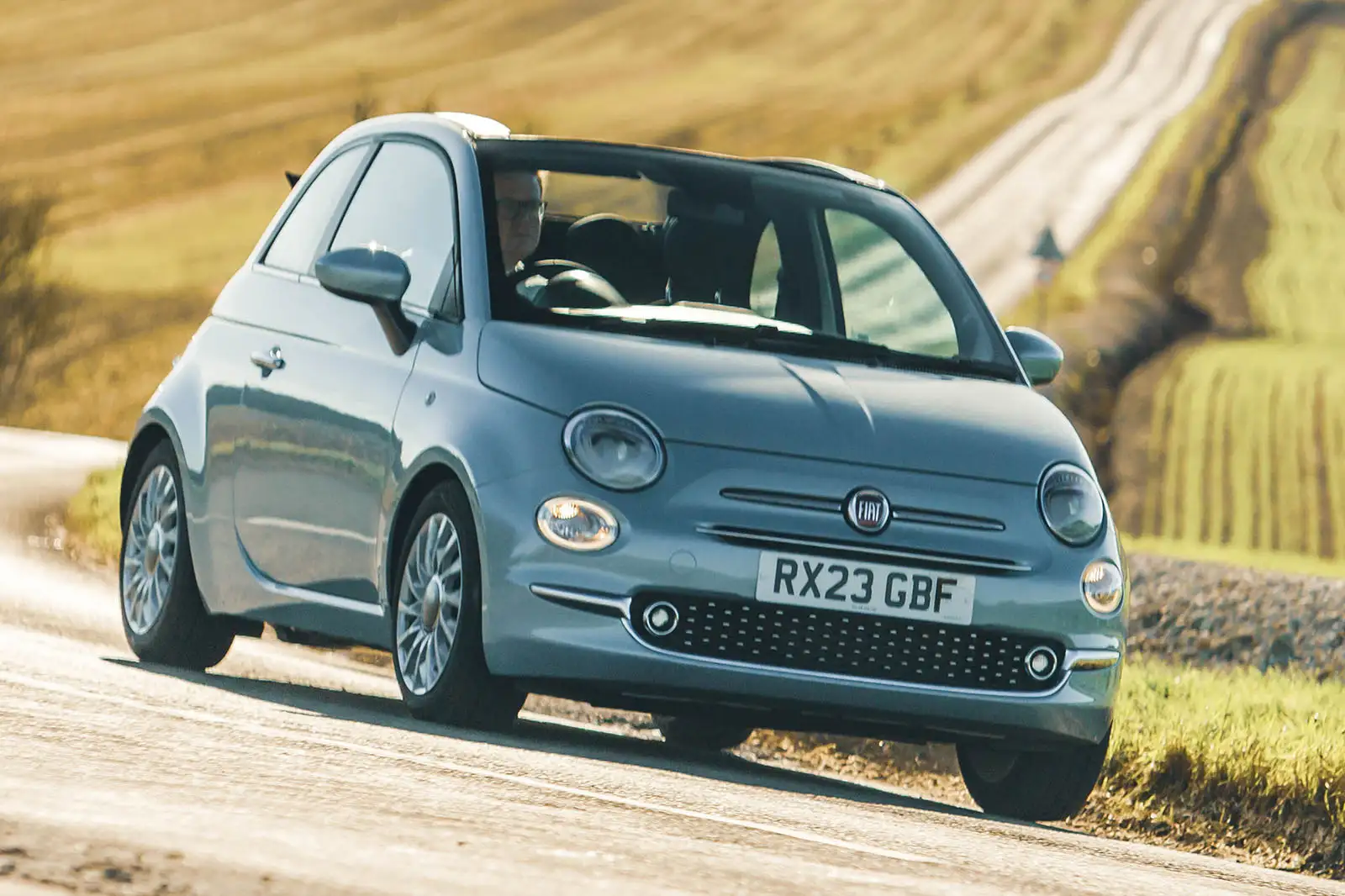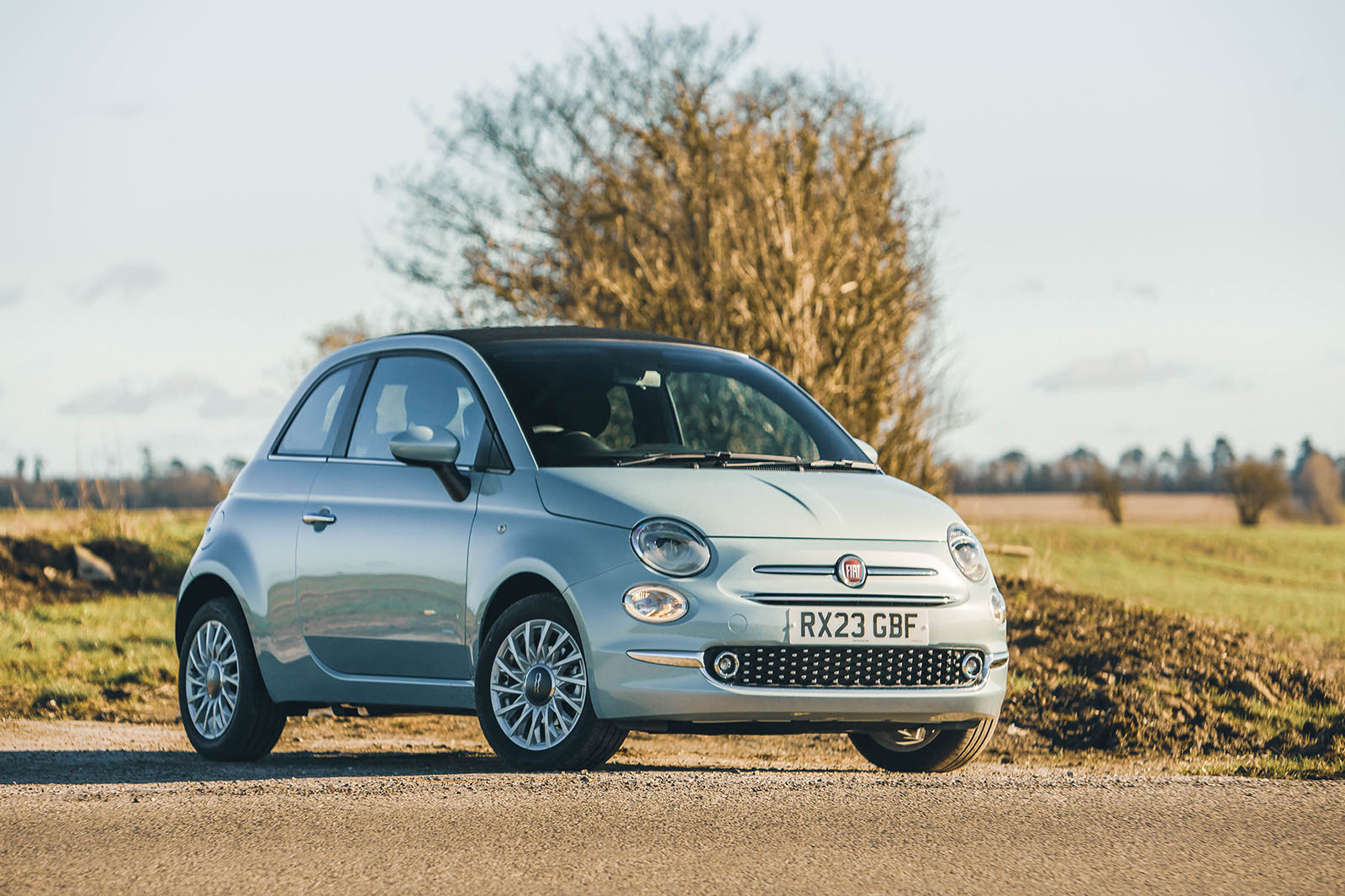Apart from the gear lever, and a few updates of the multimedia system, the 500’s interior hasn’t really been touched since its major facelift in 2015.
In some ways, it still strikes you as quite a neat bit of packaging. For outright space, you do feel quite tightly squeezed in at the wheel by the big, rudder-like driver’s door as it closes, in front of a tight pedal box and a steering column with no reach adjustment at all. But headroom isn’t so tight; the front seats adjust to let you trade off cushion inclination against base height quite cleverly; and visibility is good in most directions.
The exception to that rule, in the case of the 500C cabriolet version at least, comes when you motor the cloth hood all the way back, when it gathers up in a slightly ugly bunch behind the rear seats (usable for smaller kids only), and obscures a big chunk of the view in your rearview mirror. You also get a less accessible and generally useful boot in the case of the 500C - so it really is worth questioning how much you want that tousled fringe.
The 500’s design gave engineers a bigger challenge in making room for rear passengers than those up front. The 1957 car's roof curved towards the rear to intentionally reduce space behind the front seats, to help differentiate it from the four-seat 600. Even later 500s had rear seats that were only fit for children.
Yet today's car, which is only 3.5 metres long, was designed as a full four-seater from the off; so you sit low in the 500's back pair of chairs, on thin but dense padding, and both headroom and legroom are tight. Further rear, beneath a very small parcel shelf there is a 185-litre boot.
The cabin's material quality, which passed muster for a small car with premium intentions a decade or more ago, stands up less well to scrutiny in 2024. This is partly because Fiat discontinued the car's old richer trim levels. Our test car had dark dashboard plastics that looked hard and shiny in places, though its switchgear mostly avoided feeling cheap to the touch.
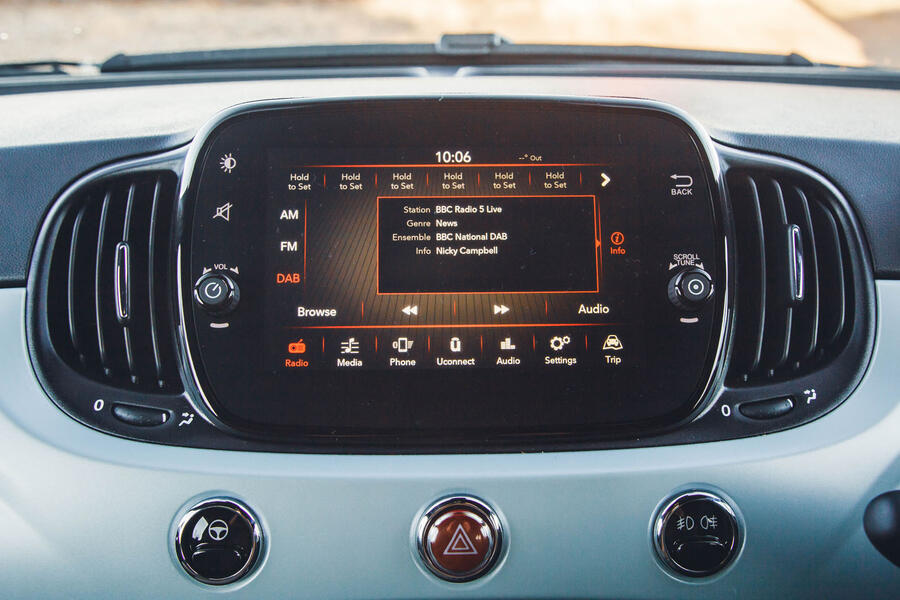
The Abarth models are a slightly different breed and, as you might expect, come with all the sporting pretensions expected from a hot-hatch-cum-track-day-special. They all come with the same 1.4-litre T-Jet turbo petrol engine, but each produce a different output - 143bhp, 163bhp and 178bhp for the 595, Turismo and Competizione respectively.
With the Abarth it’s clear that Fiat wants you to be in no doubt that you’re inside an Abarth than a regular Fiat. The general cabin layout is very similar to the normal 500, of course, but in the detailing it’s pure Abarth. At least, what Fiat perceives a modern Abarth to be, and that means bucket seats, alloy pedals, a flat-bottomed steering wheel, a turbo boost gauge/shift indicator and a Sport button on the dash.


